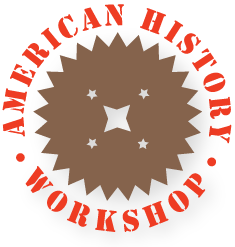Six Interpretive Principles
American History Workshop believes that interpretation is a synthesis of many domains of knowledge. Engaging a diverse public successfully means knowing how to bring together wisdom in all these different areas:
The Appeal of the Real
Visitors and program participants respond most passionately to authentic places, objects, and stories about real people. AHW insists upon careful documentation of the actual history and human experience of the artifacts, sites, and characters to be interpreted. Preserving and interpreting the real is ever more challenging in a theme park culture.
Historical Museums and Sites Serve Many Purposes
In addition to preserving traces of the past for people in the present to re-animate for themselves, public history projects now often serve as markers of community identity, agents of economic revitalization, additions to the city’s educational resources, and/or “safe places” for civic engagement. Sorting out these goals and roles is essential for success.
No Visitors, No Point
No matter how much we cherish the ideas and artifacts of the past, they have to be presented in a form that fits into the interests, visit patterns, and experiential abilities of potential audiences. Knowing who the visitors are and why they are coming (or not coming) is critical.
Visitors Make Their Own Learning
Participants in historical programs bring lots of equipment – ideas, learning skills, relationships with companions – to the encounter with history. Our job is not to fill up empty minds with new ideas, but to strengthen visitors’ ability to shape our new material into the ongoing narratives they are already constructing.
Every Local Past is Part of a Larger Story
Solid and original historical scholarship helps locate the local details in a story that links to the visitors’ own lives today. Some information may be relevant to buffs and collectors, others to teachers and students, but museums and historic sites can make the multi-dimensional quality of the past come alive for visitors as no other medium.
Choosing the Right Tool
Not every story is right for an exhibit, a multi-media show, or a computer-interactive device. Our publics deserve to get the finest design, graphics, and teaching approaches appropriate for the themes, for the participants, and for the budgetary resources at our disposal.

